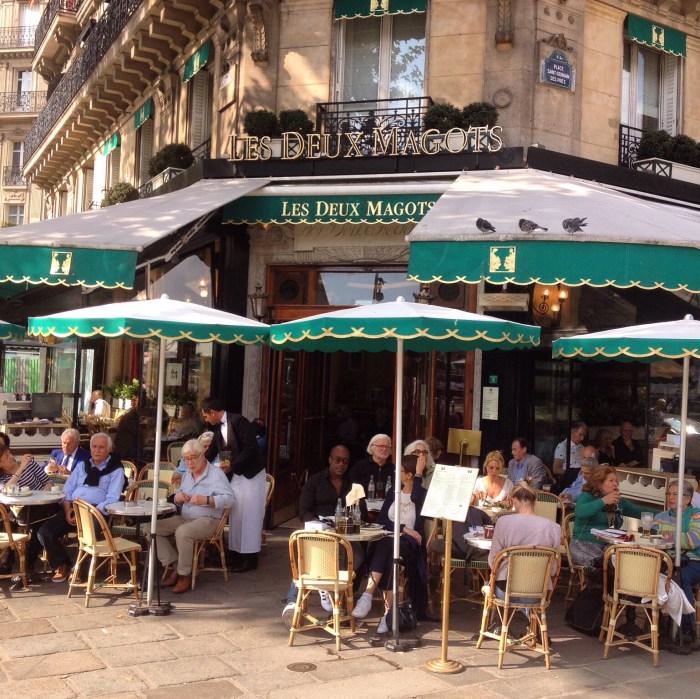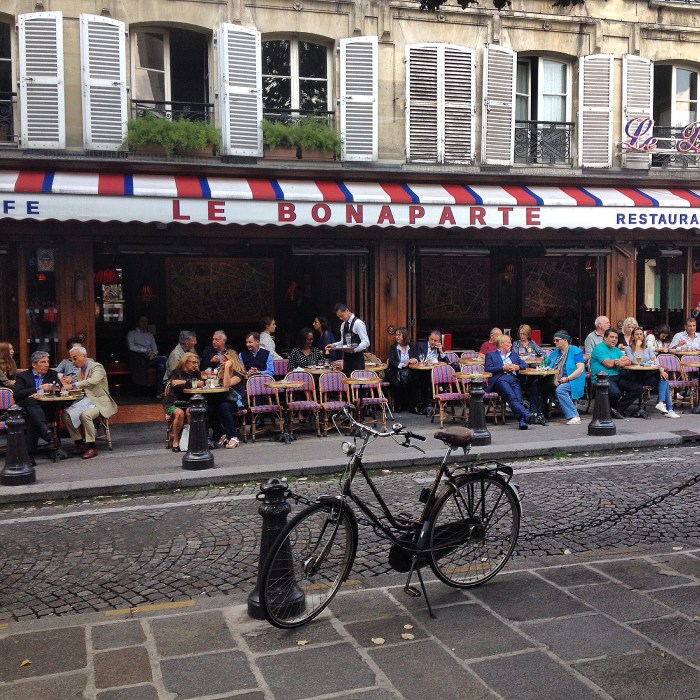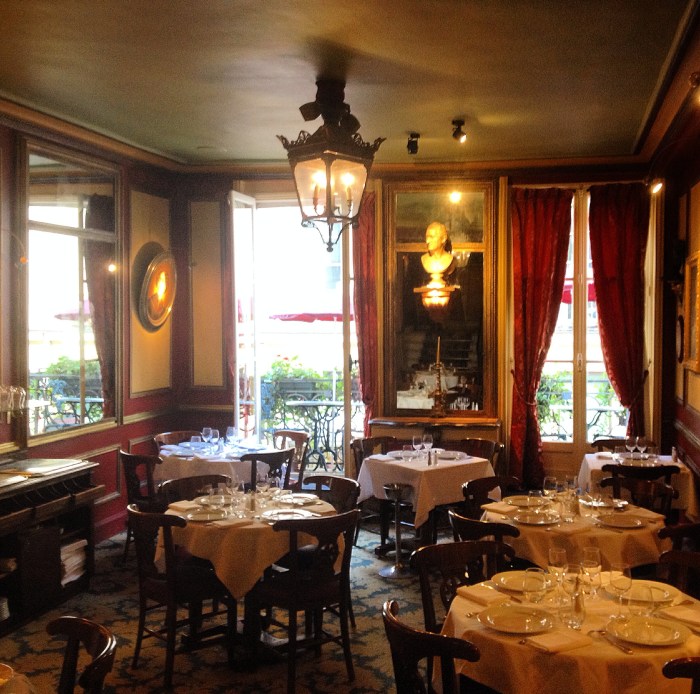The cafés of Saint Germain in Paris have a long and interesting history. This area is the infamous Left Bank traditionally an area associated with prominent intellectuals and many famous writers and artists.
The café is an important feature of Parisian life and is the quintessential place to meet up with friends, talk business and watch the world go by or as the great French writer Emile Zola once said of the cafés’ clientele, ‘great silent crowds watching the street live’.
The cafés I am featuring in this post are famous for the many notable figures who once came through their doors. I am also featuring the first cafe in the world, Le Procope, which first opened it’s doors in 1686.
Nowadays these cafés are very much trading on their enviable and dazzling history and those exciting and golden days of Sartre, Voltaire or Hemingway in these digital post-internet times are dead as Dillinger. On top of that the prices will kill you if you are on a tight budget – the cafés here are a far cry from the hole in the wall dives of La Goutte d’Or. Still if you want to experience a vicarious slice of those culturally magical times, it is well worth the splurge. Yes it is touristy but for a reason. With just a small handful of cafés on and around one boulevard boasting so many famous names and bursting at the seams with cultural history it is not difficult to see why.
Cafe de Flore

This café located on the corner of Boulevard Saint Germain and Rue Saint Benoit first opened in the 1880s during La Belle Époque.
The celebrated French poet Guillaume Appolinaire began to spend regular amounts of time here from 1913. It was Appolinaire who coined the term surrealism and with him he brought along other figures associated with the movement such as André Breton to the café.
Since then many of the cafe’s regular clientele included the famous writers and philosophers Georges Battaille, Robert Desnos, Leon Paul Fargue, Jean Paul Sartre, Boris Vian, Simone de Bouvoire and Raymond Queneau. Sartre virtually lived in the café. Pablo Picasso was also a regular.

Two overpriced Expressos
When I was there donning my silly Ben Sherman Beatles shirt which would have made those earlier serious French philosophers and great thinkers sniff at me with contempt, I ordered a tiny expresso for €4.80 whilst my sister ordered a decaffeinated coffee for the same price. I shit you not these were two of the cheapest things on the prestigious menu bar perhaps a laughably small bottle of Evian water and a small cup of hot milk. On top of that the waiters can be a tad rude yet they can afford to be rude with an endless and non stop stream of chump tourists like myself coming here for the history.
Les Deux Magots

Right opposite Cafe de Flore, Les Deux Magots was for many years (and perhaps is still today) it’s rival. Both cafés have for years been the two titans of the cafe scene on Saint Germain with equally illustrious and distinguished clientele.
Les Deux Magots was originally a novelty shop founded in 1812 at 23 Rue de Buck before moving to its current location on Boulevard St Germain in 1873. In 1885 the shop eventually became an alcohol serving café where around that time the legendary French poets Arthur Rimbaud and Paul Verlaine as well as fellow Symbolist poet Stéphane Mallarmé became regulars.

Inside Les Deux Magots
This café subsequently became associated with many more distinguished names most notably the American writer Ernest Hemingway. Writers and artists such as André Gide, Fernand Léger, Louis Aragon, Elsa Triolet, Picasso and André Breton regularly frequented the café.
I was very impressed and dazzled by the interior of the café which as well as its elegant well preserved old school aesthetics, also had black and white portraits of many of its famous clientele. Like Café de Flore my sister and I sat at one of the outside tables and ordered two small expressos around the five euro mark each. Sitting at a table right next to ours were two lovely old ladies from Argentina with whom I began a conversation in my seldom excercised Spanish regaling them with tales of my time in Argentina and other parts of South America.
Le Bonaparte

This is another good cafe within spitting distance of both the Flore and Deax Magots. While this place may lack the prestige and even authenticity and aesthetics of the other two places this is still a solid choice which also boasts a history of artists, writers and poets through the ages. It is also quieter and slightly less overrun and hectic than the other two places and almost often there is delightful street music outside.

Chocolat Chaud Maison at Le Bonarparte
We had a very good and delicious authentic chocolat chaud maison (hot chocolate) even if the price was a little steep at over 6 euros each (but then I already warned you all at the beginning of the post).
Le Procope

Le Procope, further up Boulevard St Germain on Rue de l’Ancienne Comédie and close to Odeon metro station, has the unique distinction of being the oldest literary café in not just Paris but the world first established in 1686 by a Sicilian man from Palermo named Francesco Procopio dei Coltelli. Many distinguished figures become regulars here most notably the 18th century writers Voltaire and Jean-Jacques Rousseau. Le Procope was a hotbed for liberal ideas throughout the 18th century and the history of the Encyclopaedia is linked to this café. Prominent figures of the French Revolution towards the end of the 18th century met here such as Maximilien Robespierre, Georges Jacques Danton and Jean-Paul Marat. Around this time, Napoleon left his cocked hat at the bar as collateral.

The opulant and elegant interior of Le Procope
Both of my sisters and I visited this prestigious café one late afternoon (Le Procope only operates as a café from 3pm – 6pm. Outside of these times it is a fancy restaurant). When I was not tendering to my expresso and biscotti, I was walking around the establishment spanning over three centuries and admiring and absorbing the history as well as the opulent and ornate decor full of old oil paintings and other artefacts including Napoleon’s hat.
I don’t think I would frequent these cafés regularly but for a one off taste of their awesome history it is absolutely worth it.
By Nicholas Peart
29th September 2016
(All rights reserved)